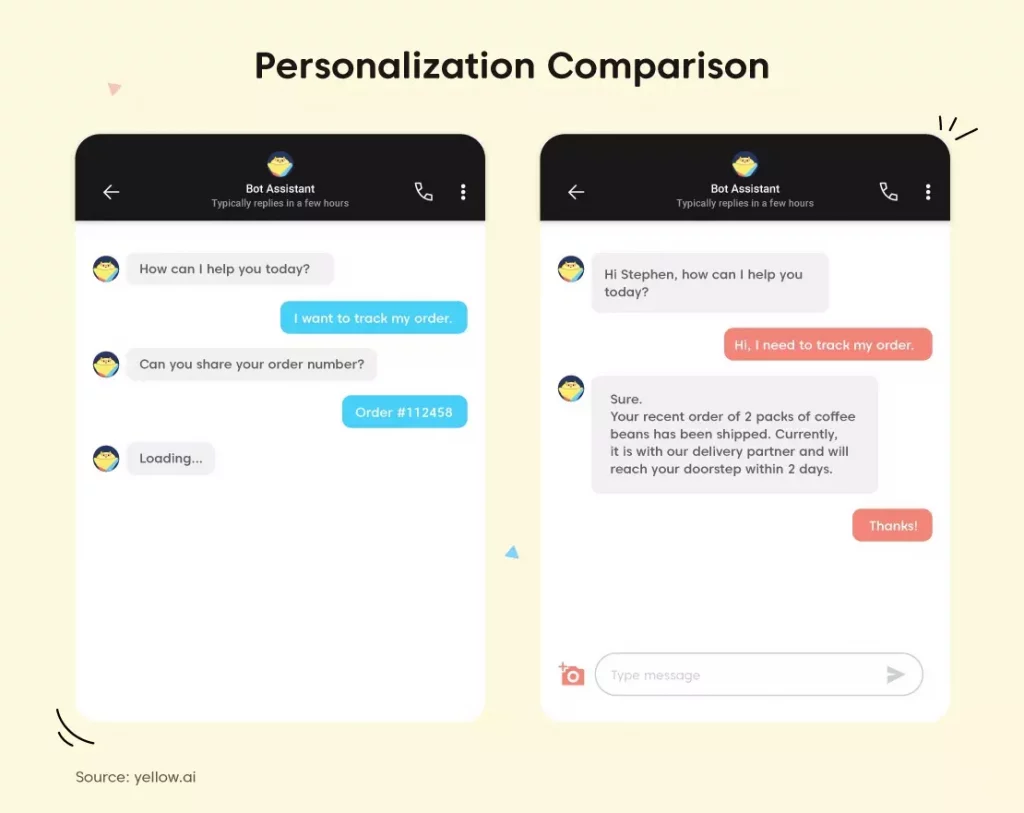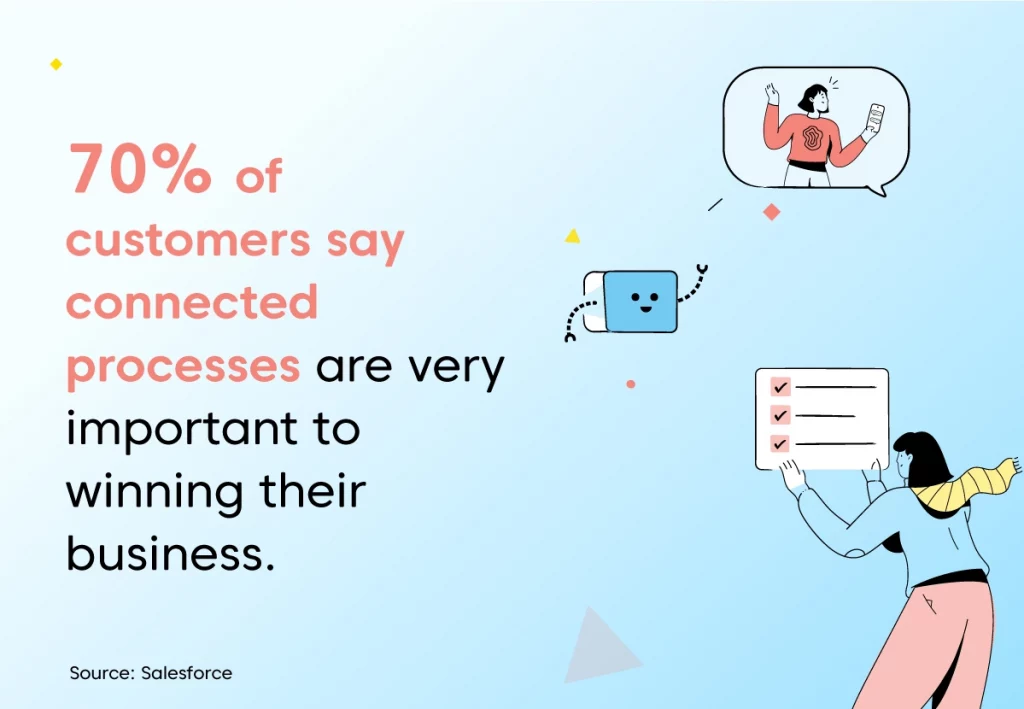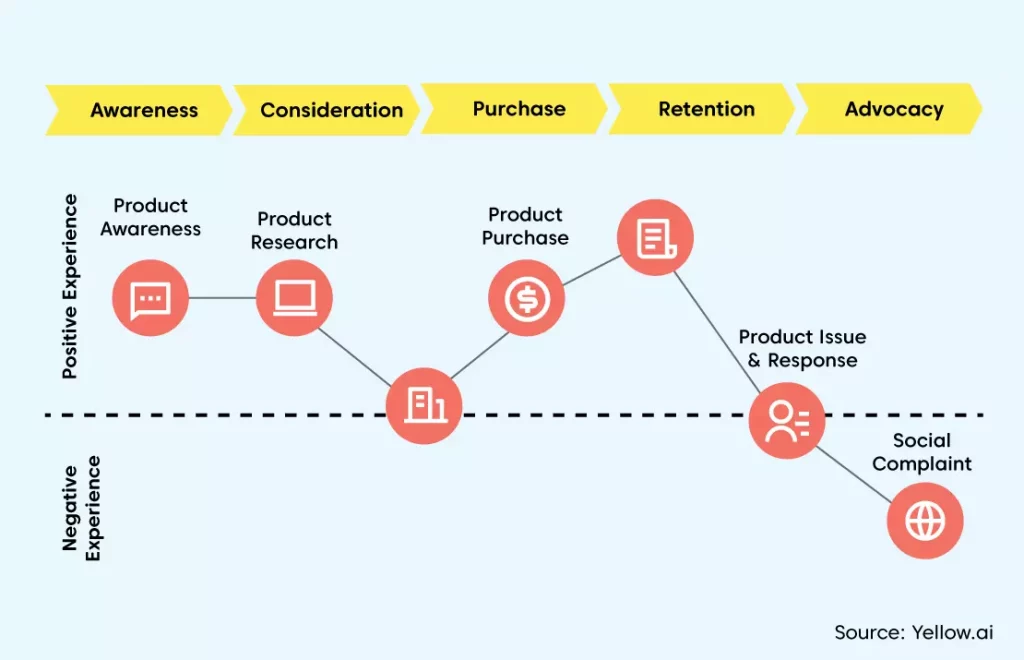Today customer journeys span across multiple channels which is making it challenging for businesses to deliver connected experiences. It’s mainly because enterprises are focusing on a multichannel customer service approach, but that may not be enough.
To meet customers’ growing expectations you not only need to engage with them over different channels but also break down communication silos and deliver a seamless omnichannel support.
As confusing as it may sound right now, by the end of this article you’ll understand the difference between omnichannel and multichannel customer service and which approach is best for both your business and customers.
What is omnichannel customer service?
Omnichannel customer service is a cross channel approach that enables customers to reach your brand through a number of integrated communication channels. Omnichannel customer support works on driving better customer engagement from traditional channels like phone support to modern channels such as email, social media, live chat and other touchpoints.

What is multichannel support?
Multichannel customer support, as the name suggests, offers two or more channels from a variety of traditional and digital channels for customers to interact with your brand. Multichannel support is mostly focused on providing more channels of support that work independently and not in a synchronized fashion. This means there ’s no real continuity or uniformity between different channels.
Omnichannel vs multichannel customer service
| Key areas | Omnichannel customer service | Multichannel customer service |
| Data usage | Access to customer data with CRM integration to gain a 360 degree view of the customer so that you can reach them at the right time via the right channel. | Data is distributed across platforms which makes its gathering and usage quite challenging. |
| Consistency | Unified customer experience that doesn’t depend on the choice of channel. | Separate experiences across channels. |
| Ease | Smooth cross-channel communication. | Customers may find it difficult to shift from one channel to another. |
| Personalization | Personalized service backed by contextual customer data. | Lack of data driven insights to provide tailored experiences. |
| Goals | To achieve synergy between channels and customer touchpoints to deliver an integrated experience. | Geared towards increasing the number of channels of communication. |
| Cost efficiency | Shortens the sales cycle and reduces costs. | Takes longer to close sales which leads to increased OpEx. |
| Customer preference | 70% of customers prefer omnichannel customer support. | 61% of customers find it difficult to switch from one channel to another and start their journey all over again. |

Which customer service approach is best for your business?
In an omni-channel customer support approach, you not only offer numerous ways for customers to interact with your brand, but also integrate multiple channels for effortless switching and better customer experience. Whereas in the multichannel approach all the channels are independent which means if the customer wants to switch the mode of communication with your brand, they will have to start their journey all over again.
Omnichannel support allows customers to start communication on any channel and complete it on some other channel of their choice. The switch between different channels is hasslefree and without any loss of information. So, it makes better sense that your business adopts an omnichannel approach if your customer ecosystem exists on many channels.
However, if your goal is to just engage with customers on multiple channels and cast the net as wide as possible to make more people aware of your business, then multichannel customer service is the way to go.
Benefits of omnichannel customer service approach

1. Various integrated channels of communication
Customers nowadays are pushed for time and find it frustrating to navigate through channels to get in touch with you. They want to interact with your brand through any channel, in any language and at any time.
Digitization has made customers impartial to the use of numerous channels like email support, phone, in-app chat, chatbots, social media, live chat, etc. Through an omnichannel customer service approach you can expand the scope of customer engagement and facilitate a seamless transition of communication between different channels by unifying consumer data.
2. Exceptional support backed by context
In omnichannel customer service, each channel works together to lead the journey of the customer in a specific direction. By centralizing customer data, your business can customize the voice that suits your customer’s needs.
The omnichannel approach is beneficial to your business support teams as well as to your customers. It gives agents complete access to customer data collected across different platforms. This data emplowers your support teams with a rich context of problems so that they can deliver the best support possible.
3. Improved quality of customer data collection
The more customer data you can collect, the better. Quality of data and relevance helps your business to make data-driven decisions and meet customer expectations. An Omnichannel approach gathers customer data powered with multi-channel insights that is highly relevant to your business and your customers.
4. Reduced customer churn
If you limit your business to certain channels and platforms then there is a high chance that you may lose your existing customers and hardly engage with new customers. Not communicating with your customers on their preferred channels can result in the abandonment of your business.
72% of the millennials prefer brands that respond to their queries and feedback on digital channels like social media. So it is quite important to offer omnichannel support that can open more options of interaction than traditional channels for your customers.
5. Optimized resolution times
Customers want an effective service, regardless of the platform that they choose to interact with your brand. They don’t want to repeat their problems multiple times and they expect you to know about their concerns even before they contact you for help.
Luckily for you, in omnichannel customer service, various touchpoints for support are unified into one platform, enabling the flow of information from channel to channel. It not only saves time for your time as they are already acquainted with the customers’ journey and issues, but it also improves CSAT and NPS.

How to transition from multichannel to omnichannel customer service?
If you are already supporting your customers on multiple channels, it’s now time to take the next step and integrate an omnichannel approach that delivers unified customer experiences. Here is how you can switch smoothly to an omnichannel customer support system.
1. Don’t redesign the entire support strategy
Unless, of course your current strategy doesn’t yield the best results for you, you don’t have to start from scratch. All you need to do is update APIs and data services to deliver a seamless customer experience.
Talk to our experts to understand how you can transform your multichannel platform into omnichannel without reinventing the wheel.
2. Create a unified view of customer data
Consolidating customer data in a single location is the essence of a successful omnichannel strategy. With the help of a robust agent-assist dashboard you can obtain a unified view of all the data collected from different platforms and equip your agents with AI-powered suggestions to ensure response consistency, provide automated responses to similar requests and resolve open tickets faster with more contextuality.
3. Design service journeys
Once you have integrated all your data to a single location, you can now use this data to mine customer intent and identify trends in customer interactions. You can then design service journeys to automate redundant tasks across customer journeys so that they can easily complete their goals.

4. Conduct MVP testing
Before launching your new customer service model, make sure you do an MVP testing to find and remove hindrances from the path of omnichannel support. This can help you in the long run by saving a lot of time and money.
Bottom Line
Both multichannel and omnichannel customer support approaches are geared towards the same goal – to provide multiple channels of communication to customers. Where on one hand, multichannel is limited to just having more than one channel of support, omnichannel unifies customer experience and journeys by connecting these multiple channels. It enables you to support your customers from discovery to conversions with personalized service backed by context.
An AI-enabled chatbot platform can help you deliver seamless experiences across channels. Get in touch with our experts to know how you can craft a winning omnichannel strategy for your business in 2022.

















